Getting new bookkeeping clients on board can feel like juggling a dozen things at once. But having a clear process makes all the difference. A well-thought-out bookkeeping client onboarding checklist can help you stay organized, avoid mistakes, and create a great first impression. This guide will walk you through essential steps to streamline the onboarding process and set the foundation for a long-lasting client relationship.
Key Takeaways
- Having a structured onboarding checklist helps ensure no steps are missed, making the process smooth for both you and your clients.
- Using technology and automation can save time and reduce errors during onboarding.
- Clear communication and setting expectations from day one build trust and improve client satisfaction.
Crafting a Foolproof Bookkeeping Client Onboarding Process
Why Onboarding Matters More Than You Think
Let’s face it: first impressions stick. In bookkeeping, your onboarding process isn’t just a handshake—it’s the first chapter in your client relationship. A solid start can mean the difference between a client who trusts you implicitly and one who’s already shopping for your replacement. Think of onboarding as your secret weapon to building loyalty from day one.
Here’s why it matters:
- It sets the tone for how you’ll work together.
- It shows clients you’re organized and professional (no one likes chaos!).
- It builds confidence in your ability to handle their finances.
The Secret Sauce to a Seamless Start
Creating a smooth onboarding experience doesn’t require magic—just a little planning. Here’s your recipe:
- Welcome Email: Start with a warm, professional email that lays out what’s next. Bonus points if it includes a checklist or timeline.
- Clear Expectations: Spell out what you need from the client and what they can expect from you. Deadlines, communication preferences, and deliverables—make it all crystal clear.
- Gather Key Info: Use a streamlined intake form to collect essentials like their business structure, tax ID, and accounting software details.
Pro Tip: Automate repetitive tasks like document collection to save everyone time.
Common Pitfalls to Avoid
Even the best plans can go sideways if you’re not careful. Watch out for these common traps:
- Overloading the Client: Don’t drown them in requests all at once. Space things out.
- Skipping the Engagement Letter: Always outline the scope of work, fees, and responsibilities in writing.
- Ignoring Follow-Ups: Regular check-ins during onboarding keep things on track and show you care.
Onboarding isn’t just a process—it’s your chance to show clients they made the right choice. Nail this, and you’ll set the stage for a long and profitable partnership.
For more tips on creating a winning onboarding process, check out this essential checklist for bookkeeping onboarding in 2025.
Streamlining Your Workflow for Maximum Efficiency

Automating the Tedious Tasks
Let’s face it—nobody dreams of manually entering data all day. Automation is your new best friend. Start by identifying the tasks that suck up your time, like invoice generation, payroll, or managing client requests. Tools like QuickBooks or Xero can handle these with just a few clicks. Not only does this save you hours, but it also reduces errors because, let’s be real, humans make mistakes, and software doesn’t care if it’s tired. The result? More time for the stuff that actually grows your business.
Leveraging Technology for Better Results
If you’re still using spreadsheets for everything, it’s time for an upgrade. Modern bookkeeping software can integrate with your email, bank accounts, and even your client management systems. Imagine this: a client sends an email with an invoice, and your software automatically logs it, categorizes it, and sets it up for payment. Magic? Nope—just smart tech. Bonus: many platforms offer dashboards that give you a bird’s-eye view of your financials, so you’ll always know where things stand without digging through files.
Creating a Scalable System
Here’s the thing about growth: it’s messy if you’re not prepared. A scalable workflow means setting up processes that can handle 10 clients as easily as 100. Start with a standard operating procedure (SOP) for every task—yes, even the ones you think are obvious. Use project management tools to assign and track tasks, so nothing falls through the cracks. And don’t forget to regularly review and tweak your systems. What works today might not work next year, and that’s okay. Scalability isn’t just about handling more work; it’s about doing it without losing your sanity.
Building Trust and Transparency from Day One

Setting Clear Expectations
Imagine starting a road trip without a map or GPS. That’s what onboarding feels like when expectations aren’t laid out upfront. Be clear about what your client can expect from you and what you need from them. Spell out timelines, communication preferences, and deliverables. Clarity is king here.
Here’s a quick checklist to keep things on track:
- Define the scope of work in plain English.
- Share a timeline of key milestones.
- Explain how you’ll handle changes or additional requests.
This way, everyone’s on the same page from day one—no surprises, just smooth sailing.
Communicating Effectively with Clients
Let’s be real: communication mishaps are the fastest way to lose trust. Whether it’s email, phone, or a fancy client portal, agree on a method and stick to it. Clients shouldn’t have to wonder if their messages are floating in a void.
Pro Tip: Create a communication schedule. For example:
| Communication Type | Frequency | Platform |
|---|---|---|
| Progress Updates | Weekly | |
| Financial Reports | Monthly | Client Portal |
| Urgent Issues | As Needed | Phone/Chat Apps |
Consistency is key. When clients feel heard and informed, trust naturally follows.
Ensuring Compliance and Accuracy
Nothing screams “untrustworthy” louder than sloppy bookkeeping. Make compliance and accuracy your non-negotiables. Double-check your work, stay updated on regulations, and be upfront about any limitations.
Here’s how you can stay on top of it:
- Use reliable accounting software to minimize human error.
- Regularly review and reconcile accounts.
- Keep clients informed about their compliance responsibilities.
When clients see you’re meticulous with their financials, it’s like giving them a warm blanket of trust. They know you’ve got their back.
By setting expectations, maintaining open communication, and prioritizing accuracy, you’re not just onboarding a client—you’re building a partnership grounded in trust and transparency.
Turning Onboarding into a Long-Term Success Strategy
Measuring the Impact of Your Onboarding Process
Alright, let’s talk numbers. You can’t improve what you don’t measure, right? Tracking the effectiveness of your onboarding process is like having a GPS for your bookkeeping business. Here are some key metrics to keep an eye on:
- Time to completion: How long does it take to fully onboard a new client? If it’s dragging, you might be over-complicating things.
- Client satisfaction scores: Send out quick surveys post-onboarding. If clients are thrilled, you’re doing something right.
- Task completion rates: Are clients finishing their onboarding tasks on time? Low rates might mean your instructions need work.
- Error reduction: Compare mistakes or missed steps before and after implementing your onboarding system.
- Client retention: Here’s the big one. Are onboarded clients sticking around longer? If so, congrats—you’ve nailed it.
Pro tip: Use tools like cloud accounting solutions to streamline your onboarding and track these metrics automatically.
Adapting to Client Needs Over Time
No two clients are the same, and your onboarding process shouldn’t be either. Think of it as a living, breathing thing—ready to evolve as your clients’ needs do. Here’s how to stay ahead:
- Check in regularly: Ask clients how they’re feeling about the process. Are they overwhelmed? Confused? Adjust accordingly.
- Stay flexible: Some clients love tech, others fear it. Offer both digital and hands-on options to meet them where they are.
- Update your playbook: As you learn what works and what doesn’t, tweak your onboarding steps. Keep it fresh and relevant.
Using Feedback to Continuously Improve
Feedback isn’t just a “nice-to-have”; it’s your secret weapon. Actively seek it out and use it to fine-tune your onboarding process. Here’s a quick game plan:
- Ask at the right time: Right after onboarding is complete, clients are more likely to give honest feedback.
- Keep it simple: A short, three-question survey can reveal a ton. For example:
- What did you like about the onboarding process?
- What could we have done better?
- Would you recommend us to a friend or colleague?
- Act on it: If multiple clients mention the same issue, fix it. Don’t just collect feedback—use it.
The Bottom Line
Onboarding isn’t just a one-and-done deal; it’s the foundation for a long-term relationship. By measuring success, adapting to client needs, and leveraging feedback, you’re not just onboarding clients—you’re building loyalty. And in bookkeeping, loyalty is worth its weight in gold.
Wrapping It All Up
Alright, so there you have it—your ultimate guide to onboarding bookkeeping clients like a pro. It’s not rocket science, but it does take a bit of planning and a solid checklist to keep things running smoothly. From gathering the right info to setting clear expectations, every step matters. And hey, don’t forget to sprinkle in some automation where you can—it’s like having a personal assistant who never takes a coffee break. With a streamlined process, you’ll not only impress your clients but also save yourself a ton of headaches down the road. So, grab that checklist, tweak it to fit your style, and get ready to onboard like a boss. Your future self (and your clients) will thank you!
Frequently Asked Questions
What is the purpose of a bookkeeping client onboarding checklist?
A bookkeeping client onboarding checklist helps ensure a smooth start for both the client and the bookkeeper. It organizes key tasks like gathering documents, setting up systems, and clarifying expectations to avoid miscommunication and improve efficiency.
How can technology improve the onboarding process?
Technology can streamline onboarding by automating repetitive tasks, securely collecting and storing client documents, and providing tools for clear communication. Platforms like cloud-based accounting software or client portals make the process faster and more organized.
What should be included in a client onboarding checklist?
A client onboarding checklist should include steps like collecting business details, obtaining access to financial accounts, gathering key documents, setting up accounting software, and clarifying roles and responsibilities. It ensures nothing important is overlooked.







